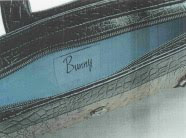The recent selection of Frances S. Wolfson and Angela Lykos as Administrative Trademark Judges at the Trademark Trial and Appeal Board, and the retirement of Paula T. Hairston, brings the number of TTAB Judges to eighteen. Judge Gerard F. Rogers serves as Acting Chief Judge.
 Rogers, Gerard F., Acting Chief Judge:
Rogers, Gerard F., Acting Chief Judge: Appointed to TTAB in 1999;
Prior Professional Experience: Trademark Examining Attorney; Assistant to the Assistant Commissioner for Trademarks; TTAB Staff Attorney;
Education: B.A., University of Massachusetts Amherst; J.D.,
magna cum laude, New England School of Law.
Bergsman, Marc A.: Appointed to TTAB in 2006;
Prior Professional Experience: Trademark Examining Attorney; Trademark Managing Attorney; TTAB Interlocutory Attorney; Dickinson Wright PLLC, Washington, D.C.;
Education: B.A., Miami University of Ohio; J.D., Cleveland Marshall College of Law, Cleveland State University.
Bucher, David E.: Appointed to TTAB in 1998;
Prior Professional Experience: Trademark Examining Attorney; Senior Examining Attorney; Legislative Assistant, Office of U.S. Senator Paul Simon; Director, Trademark Examining Organization; Deputy Assistant Commissioner for Trademarks;
Education: B.A., Eastern Mennonite University; J.D., George Washington University.
Cataldo, Peter W.: Appointed to TTAB in 2006;
Prior Professional Experience: Trademark Examining Attorney; TTAB Interlocutory Attorney;
Education: B.A., Canisius College; J.D., Albany Law School.
Grendel, Charles M.: Appointed to TTAB in 1999;
Prior Professional Experience: Private Practice in Oregon; Trademark Examining Attorney; TTAB Interlocutory Attorney;
Education: B.A., Stanford University; J.D., University of Oregon School of Law.
Holtzman, Terry E.: Appointed to TTAB in 1999;
Prior Professional Experience: Trademark Examining Attorney; TTAB Interlocutory Attorney;
Education: B.A. with honors, American University; J.D., George Mason University.
Kuhlke, Karen: Appointed to TTAB in 2005;
Prior Professional Experience: Trademark Examining Attorney; TTAB Interlocutory Attorney; Steptoe & Johnson, Washington, D.C.;
Education: B.A., University of Kansas; M.A., Columbia University; J.D., Georgetown University.
Lykos, Angela: Appointed to TTAB in 2010;
Prior professional experience: Trademark Examining Attorney; TTAB Interlocutory Attorney; Private Practice;
Education: B.A., M.A. Johns Hopkins University; J.D., Duke University Law School.
Mermelstein, David: Appointed to TTAB in 2006:
Prior Professional Experience: TTAB Interlocutory Attorney; TTAB Supervisory Interlocutory Attorney; Trademark Examining Attorney.
Education: B.A., New College, Hofstra University; J.D., American University.
Quinn, T. Jeffrey: Appointed to TTAB in 1988;
Prior Professional Experience: Trademark Examining Attorney; TTAB Interlocutory Attorney;
Education: B.A., Tulane University; J.D., Tulane University School of Law.
Ritchie, Lorelei: Appointed to TTAB in 2008;
Prior professional experience: Private Practice; Arbitrator and judge
pro tem, Orange and Los Angeles counties, California; Intellectual Property Manager, UCLA; Adjunct Professor of Law, Loyola Law School, Los Angeles; Assistant Professor, Florida State University School of Law;
Education: A.B., Stanford University; J.D., Columbia University.
Seeherman, Ellen J.: Appointed to TTAB in 1987;
Prior Professional Experience: Associate, Fross, Zelnick, Lehrman & Zissu (New York, NY); Trademark Examining Attorney; Staff Assistant, Special Assistant to the Assistant Commissioner for Trademarks;
Education: A.B., Brandeis University; J.D., New York University School of Law.
Taylor, Jyll: Appointed to TTAB in 2006;
Prior Professional Experience: TTAB Interlocutory Attorney; Trademark Examining Attorney;
Education: B.A., University of North Carolina at Chapel Hill; J.D., Howard University School of Law.
Walsh, James: Appointed to TTAB in 2005;
Prior Professional Experience: Trademark Examining Attorney; USPTO Administrator for Trademark Policy and Procedure; TMEP Editor; Arnold & Porter, Washington, D.C.;
Education: B.A., College of the Holy Cross; J.D., Georgetown University.
Walters, Carlisle: Appointed to TTAB in 1996;
Prior Professional Experience: Office of Legislative and International Affairs, Trademark Counsel; Administrator for Trademark Legal Policy for Assistant Commissioner for Trademarks; TMEP Editor
; Of Counsel, Finnegan, Henderson, Farabow, Garret and Dunner;
Education: B.A., Clark University; J.D., New England School of Law.
Wellington, Thomas W.: Appointed to TTAB in 2007;
Prior Professional Experience: TTAB Interlocutory Attorney; Trademark Examining Attorney; Private Practice;
Education: B.A., University of Maryland at College Park; J.D., American University Washington College of Law.
Wolfson, Frances S.: Appointed to TTAB in 2010;
Prior professional experience: Trademark Examining Attorney; TTAB Interlocutory Attorney; Private Practice;
Education: B.A., University of California - Santa Barbara; J.D., U.C.L.A.
Zervas, Albert: Appointed to TTAB in 2005;
Prior Professional Experience: Trademark Examining Attorney; TTAB Interlocutory Attorney; Kaye Scholer, New York; Marks & Murase, Washington, D.C.;
Education: B.A. and J.D., University of Virginia.
Text Copyright John L. Welch 2010.










































